August 24, 2020
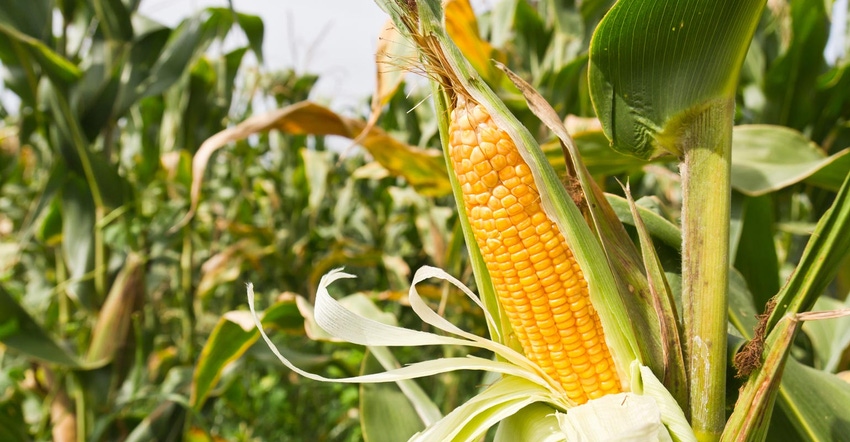
Before harvesting those ears of corn, farmers should walk the rows and spend time inspecting them. It will likely offer clues on yield this year.
Bill Wiebold, University of Missouri Extension state agronomist, says corn ears show what went wrong or right during pollination and fertilization, the most critical time of yield establishment. He offers a basic understanding of the what it takes for a corn ear to make kernels for high yields and greater profits.
Pollination review
Before pollination, the ear collects 1,000 female flowers. The structure that will become a kernel, if all goes well, is an ovule. One silk attaches to each ovule.
Just before the R1 stage, all 1,000 silks elongate under the husks and emerge. When timing is correct, pollen sheds from the tassel onto the silks, Wiebold explains. Then, pollen grains and pollen tubes begin a courtship dance of sorts. The pollen grains germinate, and pollen tubes grow inside the silks all the way to the ovule. Male and female sex cells called gametes then merge to make kernels.
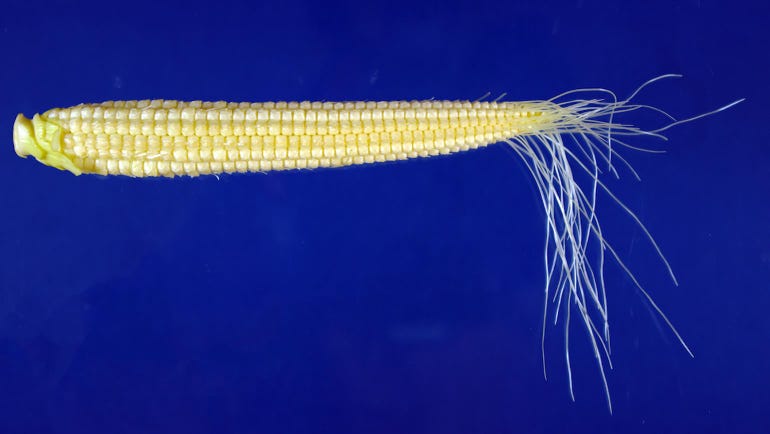
PERFECT POLLINATION: A normal, unstressed ear in late R1 stage. Silks remain only near the tip and detach from ovules after fertilization. This ear shows excellent fertilization throughout the ear. Ovules near the tip have not been fertilized, but in this field, pollen was still shedding.

“It’s an amazing process,” Wiebold says, “but in a good year, it successfully happens 15 to 20 million times in each acre of corn.”
But sometimes things go wrong, resulting in poor tip fill or unfilled ear tips. Silks from the ovules near the ear tip elongate later and slower than other silks. These latecomers emerge last, and other silks may cover them. Because of this, sometimes these silks do not capture pollen grains.
Problems with ear fill
Two main causes prevent ovule fertilization.
The first is because of slow silk elongation. Silk elongation slows if there is limited water available, Wiebold explains. Tassels develop at a normal pace, but silks may emerge too late to receive pollen shed. Tip silks are the last to emerge and may be the most likely to miss pollen. Silks that stay attached at the tip indicate fertilization of tip ovules did not happen, he says. As a result, kernels do not grow.
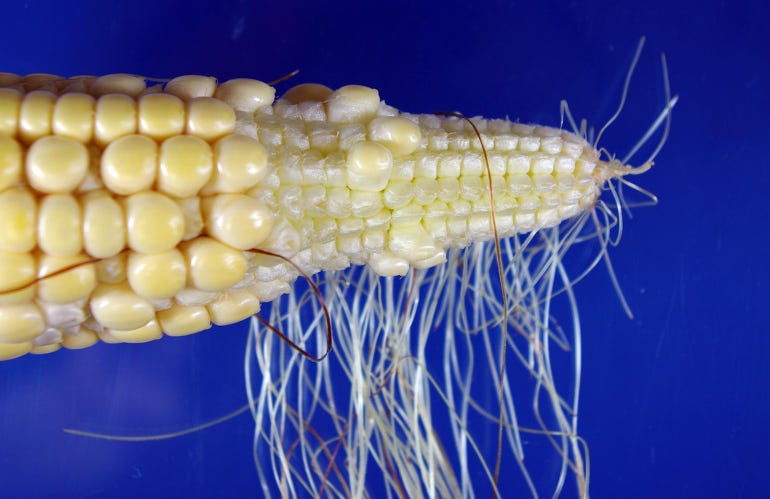
STRESS LEVEL: A drought-stressed ear. Notice the unfertilized ovules on tip. Although the ear is past R2 stage, silks are still attached at the tip indicating lack of fertilization. The tip ovules were not fertilized, and no kernel growth has occurred.

Wiebold points notes that weather stress can create problems for fertilization. The greatest risk for this is during the 24 hours between pollen grain germination and ovule fertilization.
Silks must remain fully swollen for pollen tubes to grow, he notes. When silks dry during hot or dry weather, pollen tubes stop growing and ovules do not fertilize. This can happen anywhere on the ear. The location depends on where the stress occurred.
Kernels do not grow from unfertilized ovules. Cob tissue is easy to see and looks chaffy as the ear grows. As the ear matures, the cob dries and unfertilized areas shrink, Wiebold says. These areas may be less visible at ear maturity.
Sugar supply
Sometimes fertilization occurs, but developing kernels abort or stop growing. Kernels within the ear compete with one another for sugars, minerals and water, Wiebold explains. Because of the path these nutrients take as they enter the ear from the stalk and spread through the ear, kernels at the tip are at a competitive disadvantage to receive them.
Kernels need a constant supply of sugars from photosynthesis to grow. Drought stress interrupts photosynthesis and causes leaf stomates to close and leaves to roll. Overcast skies with thick clouds also slow growth after several days. Unfortunately, kernels cannot restart their growth even when weather improves, Wiebold says.
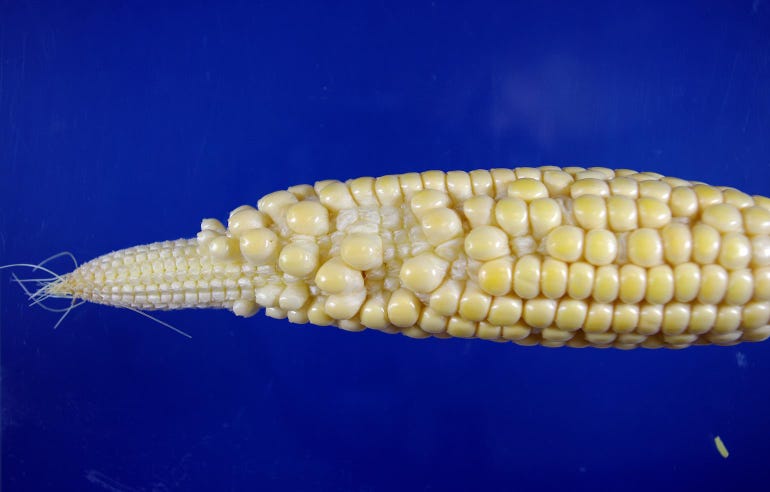
EMPTY SPACE: An ear severely affected by drought. Unfertilized ovules are scattered throughout the ear. There is a large region of unfertilized ovules at the tip, but there also are unfertilized ovules scattered across other areas of the ear.

Agronomists refer to the symptoms of these problems as “tip dieback” or “tipback.” Some dieback is normal when seeding rates are managed for maximum yield. Tipback may be visible and shows that there are enough ears for the highest yield.
Plants also compete for light and space at high stand densities, and some dieback may occur. “Of course, the number of ears more than makes up for a small reduction in ear size,” Wiebold says.
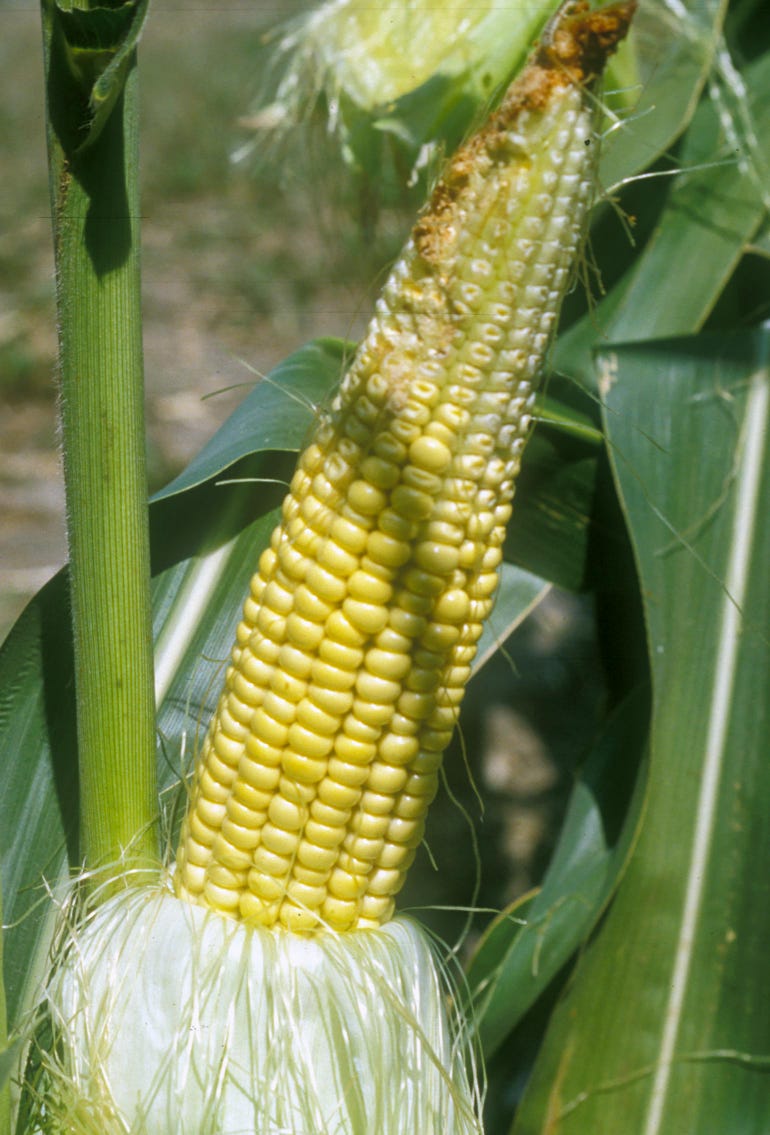
TIPPED OFF: Aborted kernels. Some tip kernels never fertilized. Others in the top half of the ear stopped growing. Arrested kernels look different from unfertilized ovules in size and color.

Source: University of Missouri Extension, which is solely responsible for the information provided and is wholly owned by the source. Informa Business Media and all its subsidiaries are not responsible for any of the content contained in this information asset.
You May Also Like




